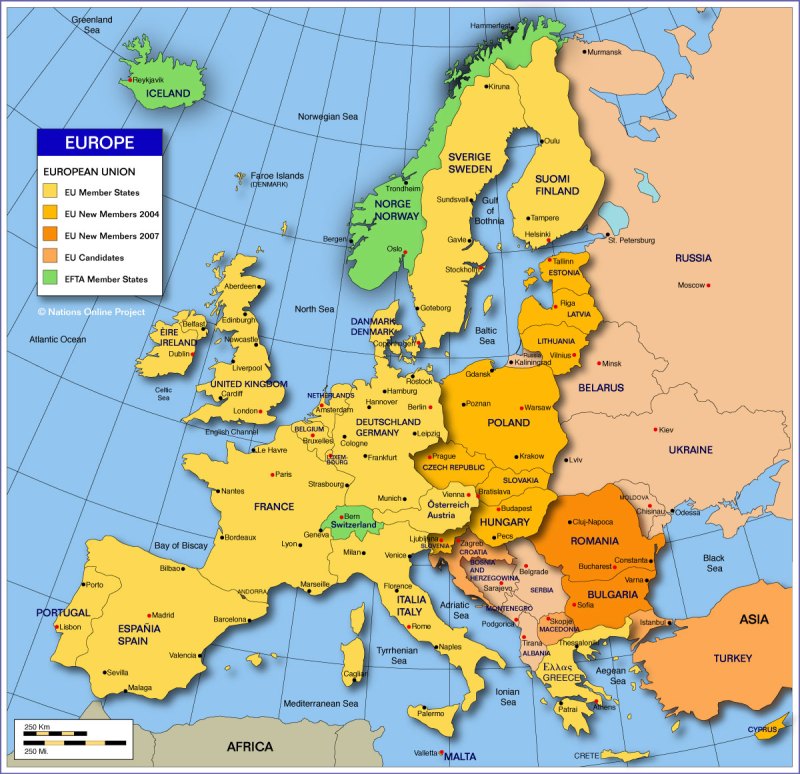-Early Peoples and Empires:
The earliest Slavs (Slavic people) came from Asia into the area that is now Poland and Ukraine thousands of years ago. Living among the Celtic and many Germanic groups occupying the area, the Slavs went unnoticed by most of the groups and migrated westward and southward (due to Asian invasions) along with the Germanic groups and Celtic in 400s and 500s AD. The Great Moravia was a united empire formed by the Slavs in 700s AD that covered much of central Europe. Along with the Great Moravia the Slavs also formed the states of Croatia, Serbia, and Slovenia in the Balkan Peninsula, but starting in 1400 the Ottoman Empire ruled the region for nearly 500 years.
The Slavs that stayed in the east settled in Ukraine and Belarus. One of the more prominent settlements was the Kiev or Kyiv on the Dnieper River. This later became known as the Kievan Rus, one of the earliest of the eastern Slavic settlements.
The Romans also played a huge role when the Empire came and conquered many lands. The area in between the Carpathian Mountains and the Danube River became known as Romania because of the heavy Roman influence in the area. Romania wasn’t unified until 1100s because of frequent invasions. After the fall of the Roman Empire the eastern half of the Empire held and became known as the Byzantine Empire. The Empire spread many things along with Eastern Orthodoxy (another form of Christianity) to the region and also protected the region from invasion by the Arabs and Turks. The Empire didn’t fall until 1453 when it was conquered by the Ottoman Empire.
-Conflict, Union, and Division:
Power struggles and ethnic diversity have long been a problem for the countries of Eastern Europe, particularly the Balkan Peninsula. The Ottoman Empire was overthrown by the Balkan Slavs in the early 1900s and Yugoslavia (Land of the South Slavs) was formed. Cooperation and unification didn’t come easily and the term Balkanization, meaning the division of a region into smaller regions that are often hostile with each other, was created because of this.
During WWII Eastern Europe suffered heavy blows from the frequent fighting that happened in the region. At the end of the war Yugoslavia emerged as a Communist country and then was conquered by the Soviet Union along with the rest of Eastern Europe causing them to have a big role in the Cold War.
In the 1990s, Yugoslavia had many of the different ethnic groups wanting to form their own nation and demanding independence. Ethnic cleansing or the process of eliminating other ethnic groups in the area soon followed after this. Peacekeeping efforts stepped in eventually and allowed many who fled the area to return to their homes.
-A New Era:
Revolts against Communist rule have drastically changed Eastern Europe. Many countries that were once Communist are now working toward democracy with free elections. Eastern Europe is moving closer to the Western Europe countries and many Eastern European countries have just recently joined the European Union.
Questions:
What was the Great Moravia?
What does the term Yugoslavia mean?
What does Balkanization mean?
Boehm, Richard G., and Dinah Zike. Glencoe World Geography and Cultures. New York: McGraw-Hill/Glencoe, 2012. Print.
“Week of 12/5/11.” Week of 9/12/11. Web. 23 Jan. 2012. <http://coachedmonds.blogspot.com/2011/12/week-of-12511.html>.
